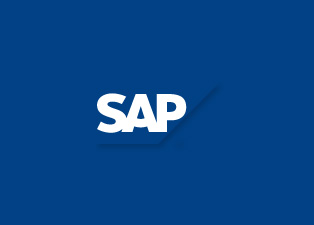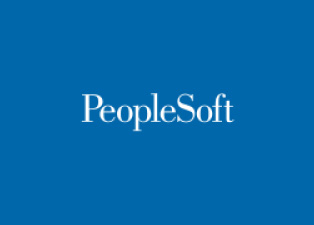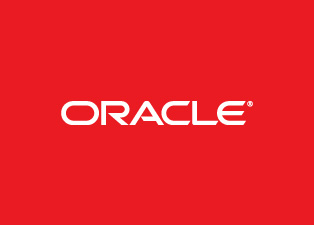Oracle Streams Replication Online Training
Oracle Streams Replication Online Training

Oracle Streams Replication Online Training Course Content:
Oracle Streams: Overview
- What Is Oracle Streams?
- Streams: Overview
- Oracle Streams Database Configuration
Configuring Communication Between Databases
- Identifying Streams Processes
- Example Streams configurations
- Configuring Simple Streams Replication
- Overview of Replication Configuration Steps
- Ways to set up Oracle Streams
- MAINTAIN_* Procedures: Overview
- Configuration Decisions, Prerequisite Steps & Instantiation Options
- Configuring Replication using Enterprise Manager
- Replicating a Single Tablespace, a Set of Tablespaces, an Entire Database, Schemas & Tables
- Viewing the Configuration Progress & Troubleshooting the Configuration Procedures
- Removing Oracle Streams Components
Customizing Streams with Rules
- Using Rules in Oracle Streams
- Generating System-Created Rules
- Using Subset Rules with Oracle Streams
- Creating Subset Rules & Row Subsetting
- Customizing System-Created Rules & Negative Rule Sets
- Rule Evaluation with Rule Sets
- Creating Negative Rules
- Monitoring System-Created Rules & Negative Rule Sets
Capture Process: Concepts and Manual Configuration
- Capture & Redo-Based Capture
- Capture Process: Components
- Identifying Changes to Capture & Data Types Captured
- Streams Support for Transparent Data Encryption
- Wallet Management
- Types of changes captured & not captured
- Limiting Captured Messages & Streams Tags
- Capture Process Architecture & Creating and managing the Capture Process
Instantiation
- What Is Instantiation?
- Performing Instantiation
- Preparing for Instantiation
- Instantiation SCN
- Setting the Instantiation SCN
- Instantiation Using Data Pump
- Viewing Information About Instantiation & Verifying Instantiations at an Apply Site
- Removing Instantiation Information
Propagation Concepts and Manual Configuration
- What is Propagation?
- Directed Networks, Queue Forwarding & Apply Forwarding
- How Does Propagation Work?
- Queue-to-Queue Propagation
- Guaranteed Message Delivery
- Queue-to-Queue Propagation and Real Application Clusters
- Manually Creating a Propagation
- Managing & Monitoring Propagation
Apply Concepts and Manual Configuration
- What is Apply?
- Processing Streams Messages
- Applying DDL Messages
- Applying Messages & Error Queue
- Apply Process and Column Discrepancies
- Creating, Modifying & Managing the Apply Process
- Querying the Data Dictionary
- Managing & Checking the Apply Process
Transformations
- Rule-Based Transformations and Capture, Propagation & Apply
- Declarative LCR Transformations
- Custom Rule-Based Transformations
- Modifying an LCR
- Using LCR Extra Attributes
- Creating a Custom Rule-Based Transformation
- Viewing Rule-Based Transformations
- Managing Custom Rule-Based Transformations
Apply Handlers
- Message Processing
- Apply Handlers for LCR Messages
- Creating an Apply Handler Procedure
- Implementing a DML Handler
- Statement DML Handler Type
- Recording Table Changes
- Viewing Change Table Handler Information
- Implementing LOB Assembly
Configuring Downstream Capture
- Prerequisites for Downstream Capture
- Configuring Log Transport Services at the Source Database
- Configuring Downstream Initialization at the Destination Database
- Configuring Standby Logs at the Destination Database
- Creating a Downstream Capture Process with a Database Link & Without a Database Link and with the MAINTAIN Procedure
- Real-Time Downstream Capture
- Monitoring Downstream Capture Processes
- Monitoring Log File Availability
Configuring Synchronous Capture
- Synchronous Capture
- Captured Data Types & Captured Changes
- Configuring Synchronous Capture
- Configuring Oracle Streams for Synchronous Capture
- Configuring Synchronous Capture
- Managing and Monitoring Synchronous Capture
Extending the Streams Environment
- Automatic Extension of OracleStreams: Adding New Shared Objects
- Adding a Table to a Single or Multiple Source System
- Adding Objects to a Multiple-Source System
- Adding a New Destination to a Single-Source System
- Final Configuration for a Populated Database & an Import Database
- Using Streams API for Rolling Database Upgrades or Migrations
- Preinstantiation Steps for Rolling Upgrade
- Creating a New Streams Site by Using RMAN
Configuring and Using XStream
- Heterogeneous Data Sharing using Oracle Streams
- XStream Architecture
- XStream Out and XStream In
- Position Order in an LCR Stream
- Configuring an Outbound Server
- Configuring an Inbound Server
- XStream in Action – An Example
- Monitoring XStream
Splitting and Merging of Streams Destination
- When to Think about Split and Merge
- Splitting and Merging of Streams
- Automatic Split and Merge Functionality
- New Data Dictionary Views
- Manual Splitting and Merging of Streams
Avoiding Data Conflicts
- What Is a Replication Conflict?
- Error Queue
- Types of Data Conflicts
- Specifying Substitute Key Columns
- Data Consistency and Convergence
- Conflict Avoidance and Resolution Foundation
- Avoiding Conflicts by Assigning Data Ownership
- Suppressing Conflict Detection & Cascading Delete Operations
Conflict Resolution
- Prebuilt Conflict Handlers
- Resolution Columns
- Configuring Supplemental Logging
- Resolving Conflicts with Prebuilt Update Conflict Handlers & Custom Conflict Handlers
- Viewing Apply Errors & Error Transaction Information
- Printing Values from a SYS.AnyData Type
- Using Procedures to Execute LCRs
- Viewing Conflict Resolution Information
Comparing and Converging Data
- Comparing Table Data
- Creating & Performing Comparisons
- Viewing the Differences in Data
- Identifying the Rows That Differ
- Converging Database Objects
- Converging a Shared Database Object with a Session Tag Set
- Rechecking the Results for a Comparison
- Viewing & Purging Comparison Results
Best Practices and Operations Considerations
- Best Practices for Streams Database Configuration
- Sharing & Purging LogMiner Data Dictionaries
- Altering FIRST_SCN for a Capture Process
- Removing Unnecessary Archived Log Files
- Best Practices for Streams Database Operation & Captured Messages
- Source Queue Growth
- Clock Synchronization
- Best Practices for Performing Backups of Your Streams Environment
Monitoring Oracle Streams
- Monitoring Tools
- Using Oracle Enterprise Manager to Manage & Monitor Oracle Streams
- Monitor Capture Statistics, Propagation Statistics & Apply Statistics
- Message Tracking & Automated Alerts
- Responding to Automated Alerts in Enterprise Manager
- Checking the Trace Files and Alert Log
- Streams Performance Advisor
- Viewing Performance Statistics for Oracle Streams Components
Troubleshooting Oracle Streams
- How to Troubleshoot
- Troubleshooting Capture
- Troubleshooting Propagation
- Troubleshooting Apply
Drop your query
Most Popular Courses
Achieve your career goal with industry recognised learning paths
What my Client's Say?
-
It was a great course over my expectations. I am eager to have another course wıth you as soon as possıble ~ R. Kamand
-
All in all, it was a very constructive and one in a lifetime experience. I'm so glad that I was part of it.~ T. Engin
-
It was the best decision I had ever made in my life. Although it was expensive for me, but I don't regret even for one second. ~ Maruti Malla
-
Thank you for this great course. I learned a lot of things, I met very nice people and I am happy that I had these 6 crazy weeks with you.".~ Najmul Shar A Baig
-
Very nice and friendly tutor and staff. The course was very fruitful, particularly the input sessions during the first half of it.~ Radha Nandyala
-
It was such great experience, though it was really intensive, it was worth doing it! Cant thank enough all team effort esp Mohan! .~ Rohan Kumar
-
The course was really good because it was a practical course.~ M.Radha patel
-
I liked this experience. Good tutor and nice mates. I will always remember it. ~ Jitu Bavaria











